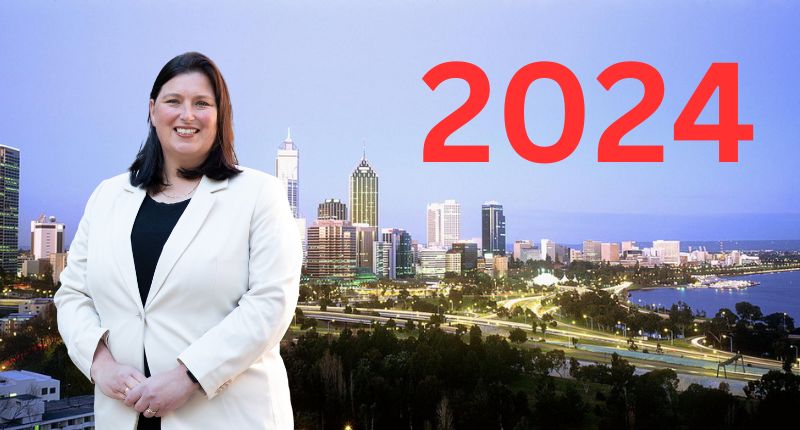
- Australia's property market faces tough conditions until 2024's end.
- Increased demand for beds, industrial assets to dominate, office vacancies to persist.
- Alternative assets will underperform, and distressed sales to increase.
The popular adage among Australia’s property analysts presently is ‘survive to 25’, a phrase that succinctly summarises the year to come. In other words, while the peak of the inflationary cycle is near, it has not passed, and tough conditions will likely persist until the end of 2024.
Still, transaction activity and demand for stock will continue in the commercial market, albeit with more restraint. Here are the top six predictions for Australia’s commercial property market, from Ray White Commercial’s head of research, Vanessa Rader.
Top six expert predictions for 2024
- Beds will be in hot demand
- Sheds will continue to dominate
- Office market remains challenging
- Alternative assets will struggle
- Re-lifing will grow in popularity
- Distressed sales will rise
Beds will be in hot demand
The best-performing markets for the year to come are the ones that address Australia’s housing crisis. Especially among institutional investors, demand will surge for built-to-rent, student accommodation, boarding houses, unit blocks and tourism assets.
The robust returns of these assets, boosted by residential rental growth rates and demand from overseas visitors, are expected to steer construction towards supplying beds in 2024.
Sheds will continue to dominate
As of late, industrial assets have been the top performers, with five- and 10-year annual returns outpacing all other asset classes at 15.3% and 13.9%, respectively.
Recently, this asset class has experienced a surge in demand combined with a dearth of stock, causing growth to rise further.
Industrial leads the pack (year to September 2023)

Although demand is predicted to level off, the supply and demand imbalance will likely persist. Nevertheless, yields will ease, aligning with the evolving cost of finance and the depth of the investment market.
Office market remains challenging
Total vacancies in both CBDs and non-CBDs have been moving upwards. Although some markets have been standouts, like the Queensland regions, this trend is not expected to change.
Office markets remain bogged down by an abundance of supply and diminished demand, placing pressure on vacancies, rents, incentives, and yields in the medium term.
The flight to quality trend will also persist, with tenants capitalising on leasing options at discounted rates as they struggle to lure staff back to offices.
“This trend will continue until greater pressure on unemployment occurs,” Rader told The Property Tribune.
Rader expressed cynicism over the belief that flexible and remote working, commonly attributed as the cause behind the sector’s current predicament, will be the norm.
“Many employers would like their staff to be more regularly in the office, and some are taking steps to reward staff in the office by way of advancement, or possible bonuses, so I expect that long-term, work from home will not be a permanent change.
“Some businesses however may prefer the hybrid models. Government tenants are more flexible, and a push by the public sector is needed if it will be a whole of market change.”
Alternative assets will struggle
Although conditions are expected to improve next year, yields for this asset class have not been performing well as of late, especially in secondary locations, oversupplied asset types, and assets with weaker tenant commitments.
Rader elaborated that the underperformance of alternative assets was not driven by any single asset type but rather by assets that were purchased hastily without due diligence in poor locations.
“We know childcare, for example, is in oversupply in some locations, and an uptick in development site applications may render some assets or developments no longer viable and revert to residential use.
“However, some childcare assets continue to achieve outstanding results. It is very much a situation of assets which were not given adequate diligence struggling, so not a whole asset type.”
‘Re-lifing’ will grow in popularity
Construction costs will remain elevated, and labour shortages will persist, given the urgency of Australia’s housing and infrastructure needs.
New projects, which are difficult to justify financially, will be brushed aside in favour of retrofitting existing assets, which can be recycled or refurbished into high-quality assets at a reasonable price.
Distressed sales will rise
Receiver sales will increase among all asset types and locations. Thus, there will be opportunities for smart shoppers looking to take advantage of distressed sales.
“We have been getting greater enquiries from receivers asking to submit on portfolios and one-off sales, this has increased in the last half of 2023 and the expectation is this will continue,” Rader said.
“While banks are happy to work with owners to avoid this situation, there will be those in distress and needing to transact in the current market. This is a trend across all regions and not any one asset type. The rapid increase in the cost of finance is the major reason.”




